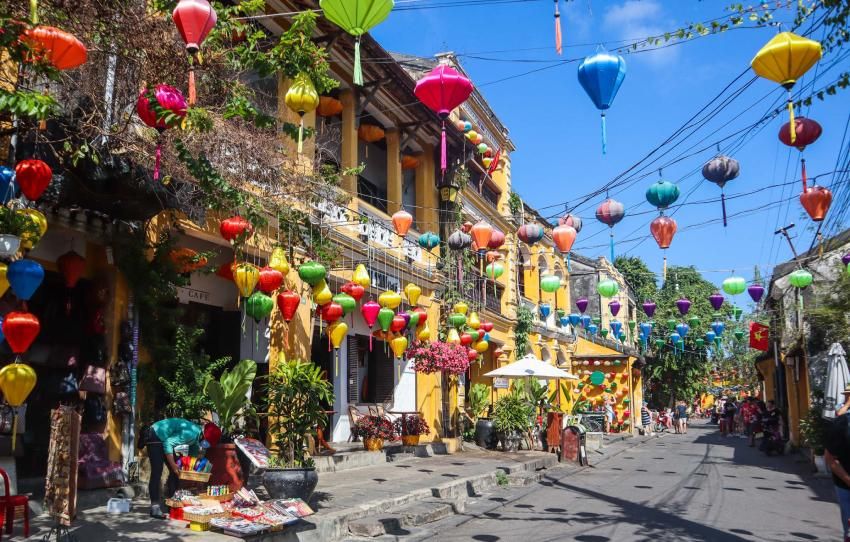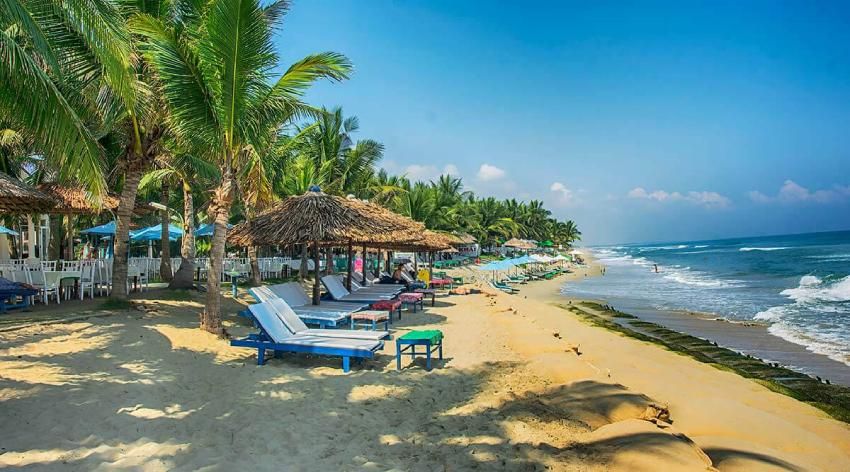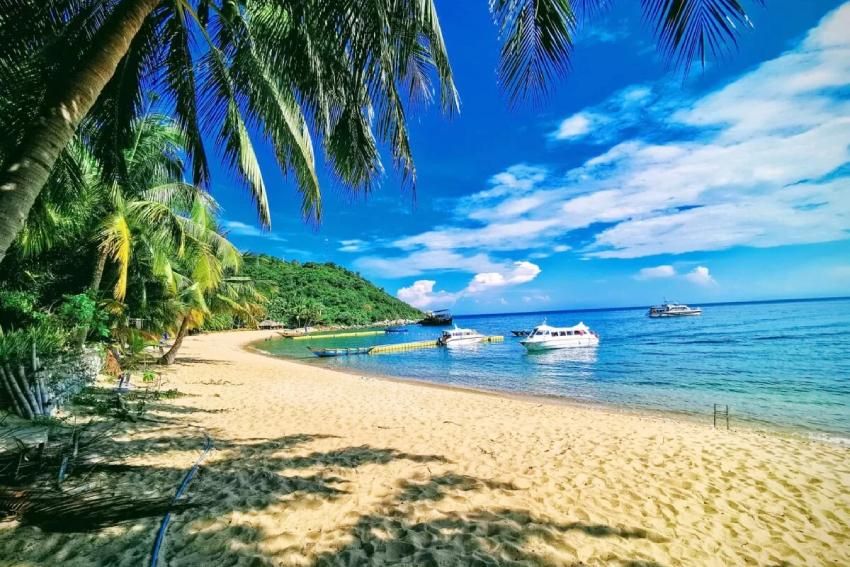Introduction of Hoi An Ancient Town
Just downstream from Thu Bon River, Hoi An Ancient Town is located in the heart of Quang Nam Province, about 30 kilometers south of Da Nang City. Hoi An, Vietnam is a famous tourist attraction and an architectural relic complex.
The town's historical significance is deeply rooted in its role as a thriving trading port from the 15th to the 20th century. During this period, Hoi An Ancient Town was a vital hub for commerce, connecting European merchants with their Asian counterparts. Traders from China, Japan, and Portugal left their indelible marks on the town through diverse architectural patterns. Recognizing the exceptional value of Hoi An Old Town, UNESCO designated it as a World Cultural Heritage site in 1999. This recognition underscores the town's status as a living museum, showcasing various construction designs and urban lifestyles worldwide.

Today, Hoi An Old Town has retained its original charm and character, thanks to dedicated conservation efforts. Strict regulations and guidelines have been implemented to ensure that any restoration work or new constructions maintain the town's pure and oriental medieval style. This commitment to preservation has allowed visitors to experience the ambiance of a bygone era and gain insight into the historical significance of the town. Wandering through Hoi An Old Town, visitors will encounter an array of well-preserved structures, including ancient houses, assembly halls, pagodas, and temples.
The best ways to explore the ancient town of Hoi An
Marvel at the beauty of the Lantern festival
Why is the lantern the most iconic symbol of Hội An? Ever since Chinese and Japanese traders introduced them hundreds of years ago, lanterns have always been hung – and made – here. For the most memorable trip (and most stunning photos), the best time to visit Hội An is during the lantern festival, held on the 14th day of every lunar month, when the moon is full.

At night, the town reduces its electricity usage, so the candle-lit lanterns steal the show. Find a spot by the river, where lanterns are cast adrift to bring good luck. Or hop onto a boat and drop a lantern as you make a wish of your own.
TOP TIP: Go during the first festival of the Lunar New Year for the biggest celebration of them all.
Take a boat tour
Given its estuary location, traditional boats are another distinctive feature of Hội An. The river that’s welcomed generations of trade is still a source of livelihood for many locals. A boat trip is a cooling, soothing way to experience the city from its waterways. The most popular choice is a sunset cruise on one of the sampans that line the riverside. Early birds should try a sunrise tour of the fish market on a traditional wooden boat. Help the fishermen returning offload their catch, ready to sell. For something different, hop into one of the quirky circular bamboo boats unique to Vietnam.

Stroll around the old town
With its historical buildings and mix of European and Asian architectural styles, there’s plenty to admire on an unhurried walk through the ancient town. The original street grid plan remains as it was, and 844 of the 1107 buildings making up the townscape are on the UNESCO World Heritage list. So walking the streets of Hội An is like moving through a living museum. Give yourself enough time to stop for a ‘cà phê sữa đá’ (delicious Vietnamese iced coffee), enter a gallery, or shop for souvenirs.

TOP TIP: Buy an Old Town Ticket at the entrance to the old town to get entry into five of Hội An’s heritage buildings.
Buy fabric and custom-made clothes
Fabric, particularly silk, is woven into Hội An’s history. During the Silk Road times, it was currency. Over time, many families took to selling fabrics or making garments. Now, Hội An is a hotspot for travelers wanting quality items tailor-made. For a sensory experience like no other, visit the Hội An Cloth Market. Here, at over 50 stalls stacked high with fabrics of all kinds and colors, sellers entice passers-by to buy.

The experience can be overwhelming. So keep a cool head, and get ready to hone your bargaining skills. Looking for a gentler, more genteel experience? Visit one of the town’s many tailors. The cost of fabric is included, so you don’t have to source it yourself. And if it’s silk you’re after, head to the Hội An Silk Village.
Visit the Japanese-covered bridge
Back in the 15th century, Dutch, Chinese, Japanese, and Portuguese merchants began to settle around the port. As communities grew in different areas, so did their interactions. Around 1593, the Japanese built a bridge to link their neighborhood to the Chinese one. Some say the bridge was also meant to subdue Namazu, the mythical Japanese catfish creature believed to cause earthquakes. All these years later, the Japanese Covered Bridge still stands strong. The landmark even features on the 20,000 VND banknote – that’s how significant it is.

TOP TIP: An Old Town Ticket gives you access to the interior temple. Money from ticket sales goes towards preserving the bridge.
Explore the museums
Unsurprisingly, the old quarter is full of museums that offer detailed insight into the story of this stunning town. Among these are five top attractions: the Museum of History and Culture gives a comprehensive overview, with artifacts spanning about 2,000 years; the Museum of Folklore looks at traditional crafts and includes a performance; the Museum of Sa Huỳnh Culture gives insight into the Sa Huỳnh period; the Museum of Trade Ceramics showcases pottery and ceramics; while Tan Ky Old House is a stunning example of Asian architecture and Oriental philosophy. Built in 1741, it’s been home to seven generations of one Vietnamese family and is a great example of an 18th-century merchant’s home.

TOP TIP: At Tan Ky House, look out for the stunning One Hundred Birds lacquered board. Written in 100 letters, each stroke of writing is an image of a bird in flight.
Head to the beach
Some visitors opt to stay at a beach-side resort, venturing into the old town for day trips. The nearest and most popular beach in An Bang. There are sun loungers and umbrellas for those wanting to relax. Watersports include parasailing, jet skis, and stand-up paddleboarding. There are plenty of bars and restaurants for food and refreshments. Cua Dai Beach is where most of the resorts are. Erosion has made the beachfront fairly narrow, but it’s still favored among locals. Hidden Beach, which lies between these two, is a quiet option. There’s a spa and restaurant for those seeking some R&R.

TOP TIP: Do as the Vietnamese do: Avoid the harsh sun during the middle of the day. Mornings should be quiet, while late afternoons and early evenings may be busy.
Visit the Cham Islands
For a trip within a trip, go to the Cham islands for the day or overnight. Cu Lao Cham Marine Park, a UNESCO Biosphere Reserve, consists of eight islands 15km off Hội An’s coast. Day-trippers go there for snorkeling, diving, or to enjoy one of eight beaches. But to experience the peace of island life, book an overnight stay. The extra time will allow you to see the sleepy Bai Huong fishing village or visit one of the island’s monuments.

TOP TIP: Take a speedboat for the quickest ride there. Or go via ferry for a more leisurely and authentic journey.
Hoi An Ancient Town with its natural landscapes, rivers, beaches, islands, and traditional delicacies is attracting both domestic and international tourists. The cultural interference made Hoi An a UNESCO World Heritage Site in 1999. A visit to Hoi An will captivate visitors with its extremely rustic and idyllic timeless beauty. So, what are you waiting for? Let's get this journey started!




